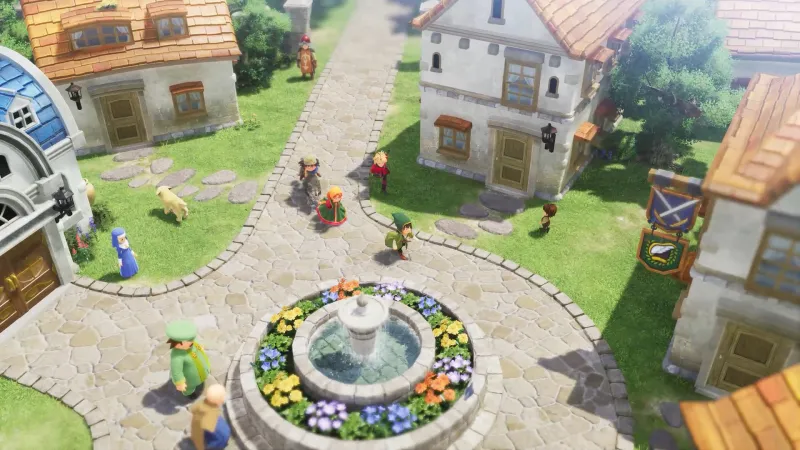Reading List
The most recent articles from a list of feeds I subscribe to.
Resident Evil Outbreak: Part 11 - Shark Tank | Super Replay
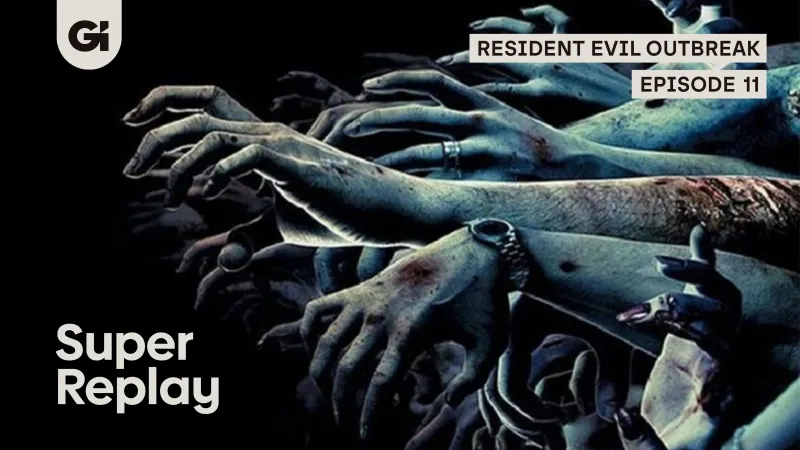
One of the biggest eyebrow raisers for the upcoming Resident Evil Requiem was the surname of its protagonist, Grace Ashcroft. That's because she's the daughter of Alyssa Ashcroft, an investigative reporter and oft-forgotten character who last appeared in the equally overlooked Resident Evil Outbreak. For the many unfamiliar RE fans, this begs the question: Who the heck is Alyssa Ashcroft, and why has she suddenly become a big deal? To prepare for the next mainline Resident Evil game, we're going to answer this tantalizing question.
Resident Evil Outbreak launched for the PlayStation 2 in North America on March 30, 2004. Set only a couple of days after the initial T-virus outbreak in Raccoon City, the game unfolds across five scenarios across different areas of the doomed city. Outbreak features eight playable characters, including Alyssa Ascroft, along with an RCPD officer, a Vietnam War veteran, a bar waitress, and a surgeon, among others, fighting for survival against the infected.
Join Marcus Stewart and Charles Harte for two hours today on Twitch and YouTube, starting at 12 p.m. PT/3 p.m. ET as they journey through Outbreak for the first time. If you can't catch the broadcasts live, they'll be uploaded to the official Game Informer YouTube channel.
Catch up on previous episodes below:
Episode 1
Episode 2
Episode 3
Episode 4
Episode 5
Episode 6
Episode 7
Episode 8
Episode 9
Episode 10
Episode 11
Yuji Horii On Early Days In Game Dev: 'I Would Just Do Everything Myself'

Dragon Quest creator Yuji Horii has been designing games for upwards of 40 years, and though he's 71 today, he still remains heavily involved in the development of the long-running RPG franchise that began in 1986. During our cover story trip to Tokyo, Japan, to play Dragon Quest VII Reimagined, Game Informer had the opportunity to interview Horii for 90 minutes and asked him about the differences between game development in the 1980s and in 2025.
He says the entire landscape is completely different.
"You know, the development landscape is just completely different compared to back then," Horii tells Game Informer. "On the original Dragon Quest, we had a team of less than 10 people, but now we have a team of 300 to 400 spending years and years making one game; not to mention the rising development cost, too. So it's just completely different."
Horii says back in the early years of Dragon Quest, he recalls doing the programming, some of the art – "I would just do everything by myself," he recalls, reminiscing on his early development days leading up to Dragon Quest.
"People would just do that, and that [game] actually got sold as a finished product back then – just one person working on a single game," he adds. "That's just not something that can happen today."
Of course, games developed by just one person release all the time, and there's an argument to be made that the growth within the indie scene proves it's not only possible, but easier than ever. But Horii is likely thinking within the Dragon Quest franchise, and in that regard, he's right – making something like Dragon Quest XI or the in-development Dragon Quest XII as a solo developer sounds like a much more challenging, if not impossible, task compared to the 1980s.
Dragon Quest VII Reimagined launches on February 5 on PlayStation 5, Xbox Series X/S, Switch 2, Switch, and PC.
In the meantime, check out this article breaking down everything in the Dragon Quest VII Reimagined issue of Game Informer, and be sure to subscribe here if you haven't yet to access the Dragon Quest VII Reimagined cover story, our deep dive into Dragon Quest history with creator Yuji Horii, and so much more.
Silent Hill 2 Remake Surprise Launches On Xbox Series X/S Today With A 50 Percent Discount
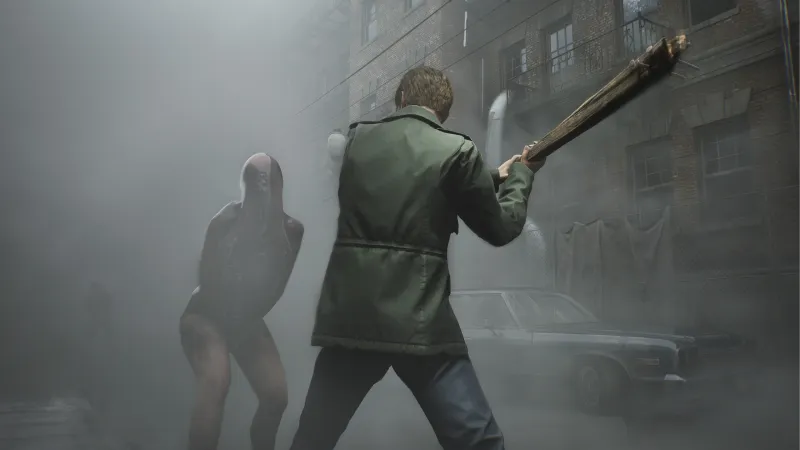
The 2024 remake of Silent Hill 2 is now available on Xbox Series X/S. If that wasn’t a surprise enough, Xbox owners can purchase the game at a special launch discount of up to 50 percent off the standard platform pricing.
It had been rumored that Silent Hill 2, which launched for PlayStation 5 and PC in October 2024, was heading to Xbox after fans spotted an ESRB rating for this version last month. Konami gave no advance announcement of this edition, and only officially revealed its existence hours after the game stealthily launched on the Australian Xbox Store yesterday.
The standard edition of Silent Hill 2 normally retails at $69.99, but the launch discount drops this price to $34.99. The $79.99 Deluxe Edition is currently on sale for $39.99.
Developed by Bloober Team, the remake of Silent Hill 2 has received heaps of praise, including scoring an 8.75 out of 10 from us at Game Informer. Reviewer Kye Hilliard wrote in his review that,
“Bloober’s take on Silent Hill 2 is engrossing, even if words I would usually use to compliment other games like “fun” simply don’t apply here. I experienced the original game shortly after its first release, but I was still eager to see where the story was going and what new ways I would dive into the psyche of James and the others he met in Silent Hill. Despite the difficult revelations Silent Hill 2 unveils along the way and how uncomfortable the experience made me (by design) I was eager to immediately start the journey again after seeing the credits.”
To read more about Silent Hill 2, check out this news about its upcoming live-action film adaptation, Return to Silent Hill. Konami recently announced that Bloober Team is remaking the first Silent Hill game. You can also read our review of the series' most recent entry, Silent Hill f.
English Edition Of The Legend Of Mana 30th Anniversary Edition Art Book Arrives Next July

Game Informer can exclusively reveal that Dark Horse Books and Square Enix are publishing their Legend of Mana: The Art of Mana – 30th Anniversary Edition in English for the first time. This expansive art book features 80 pages of materials from the 1999 PS1 RPG, which was released in the West in 2000 and remastered in 2021. The book will become available in the U.S. next summer.
This hardcover book includes art from the game’s original release, including new pieces made exclusively for the book by artists Yukata Koyama, Shinichi Kamoeka, Masaki Takahashi, HACCAN, and Kanta Kamei. You can check out the cover art below.

30th Anniversary Edition offers a deeper look at art and materials from the game. This includes details on Lands and Artifacts, character pixel art, Mystic Cards, boss monster illustrations, newly drafted selection screen art, character designs, and background art.
Legend of Mana: The Art of Mana – 30th Anniversary Edition will be released on July 28, 2026, in book stores and in comic shops on July 29. You can pre-order it now at Amazon, Barnes & Noble, and local comic shops for $29.99.
For more on Legend of Mana, you can watch us revisit the original game in this classic episode of Replay.
Nioh 3 Preview – An Exciting And Necessary Shake-Up
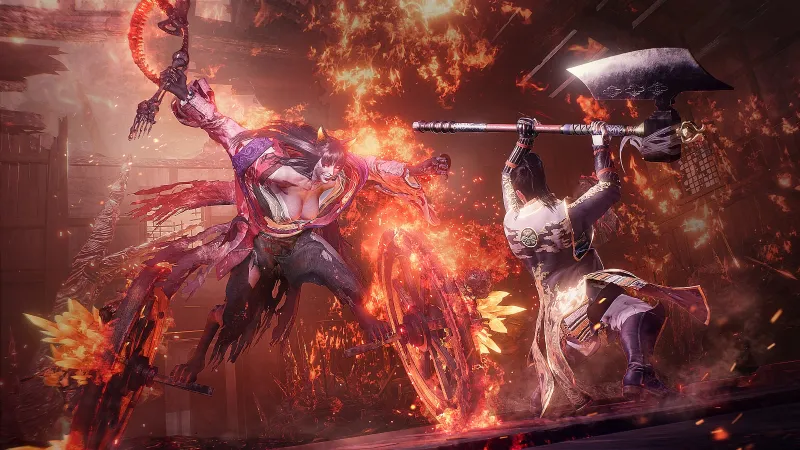
Platform:
PlayStation 5, PC
Publisher:
Koei Tecmo
Developer:
Team Ninja
Release:
Rating:
Mature
Team Ninja’s Nioh series capitalized early on the rising popularity of Soulslikes, establishing itself as arguably the best non-From Software spin on the subgenre. The franchise’s faster-paced, loot-driven formula has earned it a dedicated fanbase, so much so that Nioh’s blueprint has been applied to similarly designed Team Ninja games such as Wo Long: Fallen Dynasty and Rise of the Rōnin to varying results and some diminishing returns. Instead of resting on these laurels, Nioh 3 thankfully shakes up this reliable template with a new ninja-focused class, more open level design, and an intriguing time-hopping premise.
I traveled to Koei Tecmo’s San Francisco office to play roughly four hours of Nioh 3’s mid-game sections and speak to the game's principal leads. The game unfolds during Japan’s Sengoku period and stars Tokugawa Takechiyo, a warrior positioned to become the nation’s next Shogun. However, Takechiyo’s power-hungry younger brother conspires to overthrow him by leading a force of yokai against the entire country. With Japan now morphed into a demonic hellscape, Takechiyo must make things right in a story that, somehow, spans hundreds of years of Feudal Japanese history thanks to the mysterious presence of time-travel.
In a chat with game director and Team Ninja head Fumohiko Yasuda, he says he felt the evolution between Nioh 1 and 2 was “lacking”, and wanted a third entry to take a bigger leap forward. “When we wanted to do Nioh 3, I think I really wanted to make sure that we had something that had a new kind of gameplay as well as a new kind of gameplay experience, in addition to just evolving the action as well,” Yasuda says through a translator.
I play this demo using a pre-built character (that I still get to customize using the series' character creator, which seems largely unchanged). Nioh 3’s biggest change in regards to combat is that players can now switch between two fully fleshed out gameplay styles: Samurai and Ninja. I begin by using the Samurai style, which, to be blunt, offers the standard Nioh gameplay experience. I have four sword stances to swap between, one of several guardian spirits to call upon for a supernatural assist, and combat remains the fast-paced assault of flashy weapon attacks interspersed with well-timed uses of the Ki Pulse mechanic to regain stamina. Ninja style offers a stark contrast by emphasizing evasion and overall speed. Hitting the right shoulder trigger switches between Samurai and Ninja styles on the fly, and timing this button press before enemies land crimson-tinted attacks triggers Burst Break, which offers a powerful counterattack on top of the style change. It's a supremely useful and fun mechanic I enjoyed trying to master.
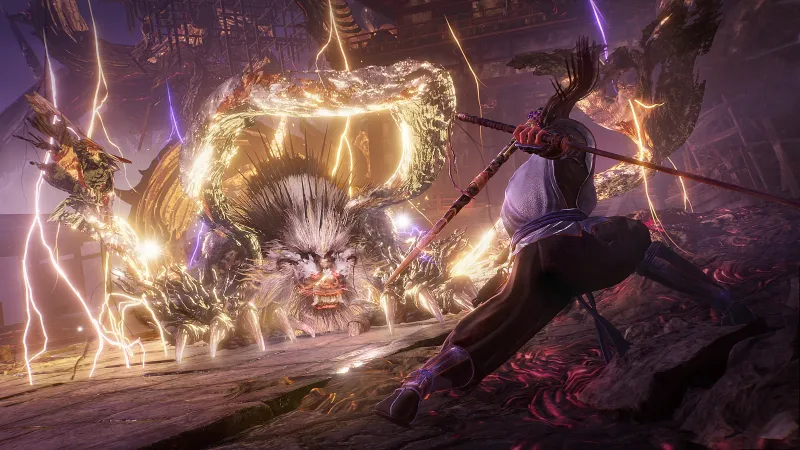
In terms of what inspired this new gameplay style, Yasuda says the Ninja offers another recognizable facet of Japanese culture while also providing the visual and gameplay contrast he desired. “When you kind of think about [it], samurai are very sort of feet on the ground, they have very like solid, powerful attacks,” Yasuda explains. “In contrast to that, ninjas are quite speedy and have the ability to use Ninjutsu, which is a little bit of tricksterism inside of there as well.”
The Ninja style became my preferred style as someone who generally favors speedier characters, and while the gameplay is similar, there are key differences. For one, Ninja style replaces the signature Ki Pulse mechanic with Mist, a spinning dodge-like maneuver that still replenishes stamina. Even better, I like how this move positions me behind enemies to take advantage of the Ninja’s increased back attack damage, ensuring I make constant use of it. Ninja style also replaces the sword stances with tools such as shuriken, caltrops, and a ninpo-style fireball. Although I don't make as much use as the shurikens and fireballs, which only deal minimal damage, I unexpectedly gravitated towards caltrops; spreading them on the ground during fights dealt helpful chip damage while occasionally staggering enemies long enough to dish out offense.
Performing well fills a new spirit meter that activates Living Artifact, a new mechanic that temporarily transforms players into a destructive deity-like force. While in this powerful form, I’m encouraged to go off with devastating, wide-sweeping attacks. After taking down numerous foes in carefully executed duels, it feels liberating to wildly smash enemies like a yokai-powered Hulk. However, Living Artifact lasts as long as a dwindling meter allows, and taking hits removes chunks of this meter, shortening the transformation’s already fleeting duration.
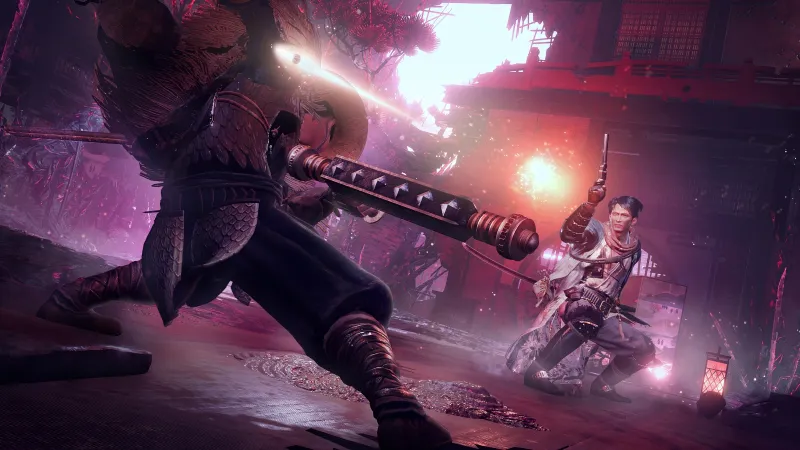
Samurai and Ninja styles sport individual loadouts, so they're equipped with separate weapons, armor sets, and even the powerful spirit guardian special attacks. This makes it feel like swapping between two wholly different characters. Keeping in mind that I was dropped into a mid-game build, I felt overwhelmed by how much there is to keep up with. Nioh is already a mechanically dense series, and players now have double the moves, tools, and skill trees to manage. But Team Ninja assures me that Nioh 3 doesn’t require players to master every mechanic to succeed. In fact, I’m told it is absolutely possible to beat the game using only a single style, so if you favor the Ninja style, for example, you can treat Nioh 3 as a shinobi-focused adventure. That's good to hear, because I occasionally felt guilty for not remembering every tool and ability at my disposal.
Speaking of juggaling a lot of abilities, each weapon type has its own individual skill tree. You can unlock new moves to add more robust options for your two equipped weapons, be they katana, dual axes, spears, and many more. Nioh already encouraged players to settle into their favorite weapons early and stick with them to gain complete mastery. This new progression system hammers that philosophy home more than ever, as each weapon has a deeper-than-expected tree of skills that players will only see the end of if they're not spreading their upgrade points across multiple other tools.
In another significant but welcome departure, Nioh 3 ditches the antiquated, mission-based level selection of previous entries. From what I saw while playing, players transition between areas in a more cinematic and direct fashion. Levels themselves sport what Team Ninja describes as an “open-field” approach, which is their way of saying environments are more expansive and feature multiple paths. The most surprising addition is a traditional map, a feature almost unheard of in this genre, but one I’m also not complaining about. In addition to tracking your location, the map also displays missed collectibles for easy cleanup while backtracking. You can also freely fast-travel between shrines at any time.
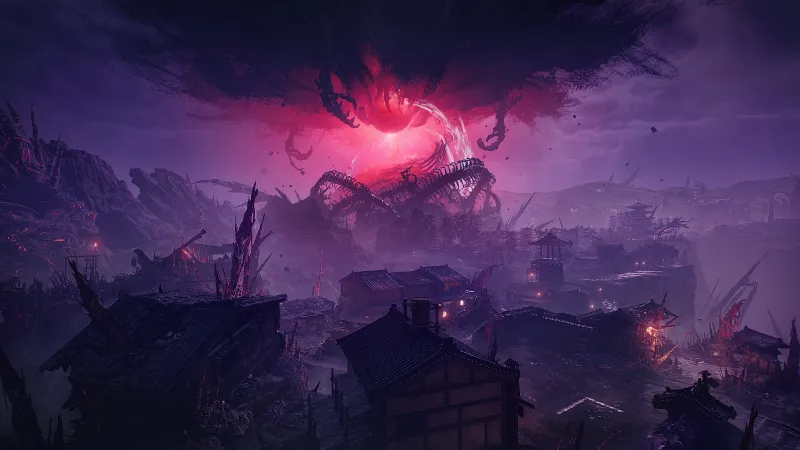
As someone who enjoys the interconnected level design of most Soulslikes, I’m on board with this approach, and alternate routes can yield secrets, such as hidden Kodama spirits. One of the coolest destinations is Crucibles, gated areas filled with deadlier foes who reward greater loot drops, like rarer armor and weapons. One crucible transported me to a devastated Kyoto circa 1864. To say it's seen better days is an understatement. Kyoto has been torn asunder, with spires of demonic mountains protruding from the landscape amid a crimson red sky. As I look above, I see a massive centipede snake across the sky; it’s a beautiful, if horrific, sight. I’m tasked with heading toward the city's center, and plenty of demonic opposition wait to cut my adventure short.
Nioh 3 is, by design, going to kick your butt, but it was hard to gauge how much so using a pre-made, kitted-out character. When I ask how difficult this new entry is, Team Ninja compares it to the quite hard Nioh 2 while noting that the larger zones can help players mitigate any hardships. “I think the opportunities to be able to overcome those difficulties, we've given the players a lot more options of how they can go about doing that,” producer Kohei Shibata explains through a translator.” I one-shotted most of the smaller mid-bosses, though I attribute this more to my late-game build than anything else. One proper boss battle against the gun-toting swordsman Takasugi Shinsaku gave me the blistering yet entertaining challenge I expect from the series. Dodging his bullets and deliberate sword strikes while also contending with his guardian spirit, a fox-masked maiden, sent me to the Game Over screen more than once.
Although I couldn’t get Team Ninja to spill more tea on the game’s story, which sees players mysteriously time-traveling across roughly 600 years of Feudal Japanese history, what I do know about Nioh 3 has me excited. It's Nioh in the ways that matter, but I'm eager to master the new Ninja style (despite having to deal with even more of the game's overabundance of loot), and the action is as sharp as the series has ever been. When it was first announced, I tipped my hat in acknowledgment that it would likely be a good but extremely familiar threequel. Having played it, I’m genuinely enjoying its changes and am far more interested in seeing how it ultimately shapes up.

